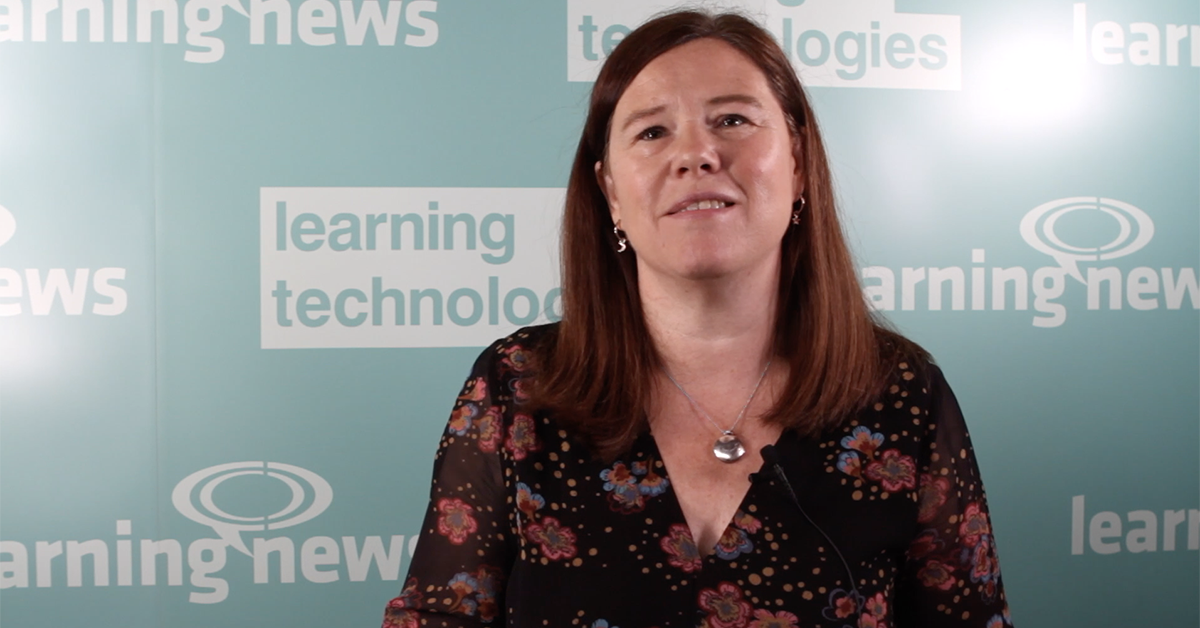
Investment in learning culture is the key to keeping up with the pace of change and delivering real impact
Prioritising learning culture over technology is one of the key findings of the annual research report released by Emerald Works.
Following its recent launch, Emerald Works has shared key findings from its annual research report, which reveal that organisations need to prioritise establishing a collaborative learning culture over investing in digital technology to gain real lasting impact on business growth.
The report, Back To The Future: why tomorrow’s workforce needs a learning culture, draws on insights from Emerald Works’ yearly Health Check, and looks at the past, present and future of learning and development. The Learning Health Check, formerly of Towards Maturity, is the only free, independent and confidential benchmarking tool for L&D professionals.
Produced by Jane Daly (pictured), Chief Insight Officer, and Gent Ahmetaj, Senior Researcher, the report will be formally released and discussed at the Learning Technologies 2020 conference in London on Wednesday 12th February.
One of the striking findings of the report is that while investment in digital learning technology has gone up in 2020, only 15% of learning leaders report this driving business growth, lower than in 2019.
Only organisations that have established collaborative high impact learning cultures (HILC), which involve their learners at the design stage are bucking the trend. The report finds that these HILC are 10 times more likely to have a sustainable impact on four critical levers of business: growth, transformation, productivity and profitability.
From this key insight, the report concludes that the L&D community must prioritise learning culture over learning technology and crucially do less, but better. To support the learning and organisational development (L&OD) community, the report provides a summary of the six common habits of HILC, which are:
1. Lead with purpose – a clear L&OD intent
2. Nudge behaviour – transformative leadership
3. Facilitate critical connections – thriving learning ecosystem
4. Drive experiences that matter – self-determined consumer learners
5. Connect people with success – dynamic capability impact
6. Adapt capability to need – precise learning guidance
The report, which uses a combination of quantative and qualitative analysis, draws on data from 9,000 employees from 1123 organisations from over 22 industry sectors in 83 countries who took part in the Learning Health Check. From those organisations, 79% of the participants were senior learning or people change leaders.
Jane Daly, co-author of the report, said: “By 2030, the characteristics of a thriving workforce will be dynamic, adaptable, and boundary-less, these traits are highly desirable but not easy to sustain because they are the result of collective behaviours, supported by relevant applications. “As we explored the evidence, it became more and more apparent that people thrive in learning cultures. They are storming ahead despite the same strong headwinds, whilst the majority of organisations without expert guidance to nurture their culture are struggling to keep up.
“Learning cultures are created by people, for people but they do require expert guidance to nurture and hit the right capability targets. Learning leaders need to think more perennial and less annual, creating a circular capability economy. The short-term pendulum swinging that has got to stop, behavioural change takes time but once the foundations are laid, it's all worth it.”
Donald H Taylor, Chair, Learning and Performance Institute, said: “The L&D profession needs to pause and use this evidence to good effect to consider what we do next. As we look to the next decade, it is evident that what has succeeded for L&D until now - the production of materials and the delivery of courses - will not succeed for us in the future.
“Tomorrow’s workforce requires us to be bolder, more in tune with the business, and lessfocused on delivery. How will we achieve this? The answer will vary depending on context, but this report is the right place to start in searching for answers. “If we want to look back in 2030 and see a very different story of success, we must sow the seeds of change now.”
Emerald Works launched on 28 January, formed from the amalgamation of three established international learning organisations GoodPractice, Towards Maturity and MindTools. As one global company, Emerald Works will use its unique combination of learning expertise and resources to unlock the potential of millions of learners around the world.
Limited-edition printed copies of the research report are available the Emerald Works launch of the research report at the Learning Technologies 2020 conference: Wednesday 12th February, at 5pm in the Platinum Suite, Track 2, ExCel, London. More information can be found at stand (G20) at the Learning Technologies 2020 conference.
Issued by Karen Preston, Marketing Communications Manager, Emerald Works.
Contact: kpreston@emerald.com



